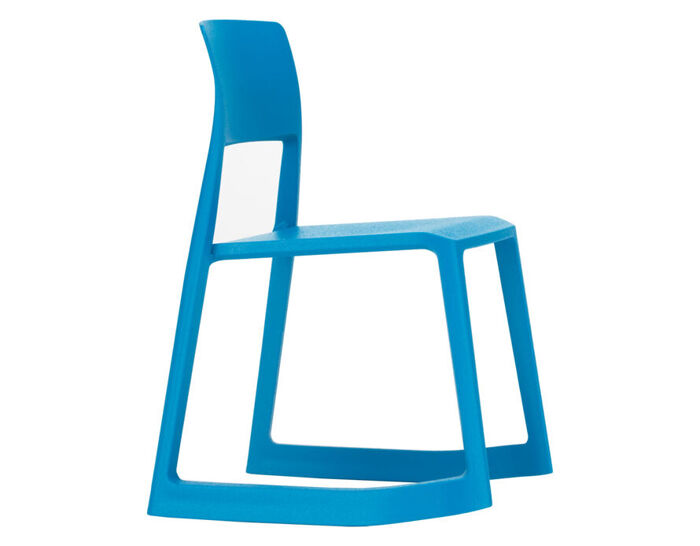Miniature Tip Ton Chair
by Barber & Osgerby from Vitra.
miniature tip ton chair
Design Edward Barber & Jay Osgerby, 2011
1/6 miniature scale model
Made in Poland by Vitra
For over two decades, the Vitra Design Museum has been making miniature replicas of milestones in furniture design. The Miniatures Collection encapsulates the entire history of industrial furniture design - moving from Historicism and Art Nouveau to the New Objectivity of Bauhaus and Radical Design, and from Postmodernism all the way up to the present day. Exactly one sixth of the size of the historical originals, the chairs are all true to scale and precisely recreate the smallest details of construction, material and color. The high standard of authenticity even extends to the natural grain of the wood, the reproduction of screws and the elaborate handicraft techniques involved. This has made the miniatures into popular collector's items as well as ideal illustrative material for universities, design schools and architects.
The most striking characteristic of Tip Ton, designed by Edward Barber and Jay Osgerby, is its forward-tilt function: the front edges of the runners are angled at nine degrees to allow the chair to tip slightly forward and remain in this position, thereby improving posture, blood circulation and concentration.
Originally developed for a school in the English town of Tipton, the Tip Ton chair has since become established as a universal seating option, thanks to its perfectly proportioned design.
Each Vitra miniature is true to the original in construction and materials, and reduced in size on a scale of 1:6. Each miniature is packaged in a wooden box, accompanied by an informational booklet. Production notes: Each of the delicate objects are made by hand; on average, each miniature requires five hours of careful manual work. Ongoing quality control ensures that every miniature corresponds to its larger original in terms of finishing, details and materials.
5.1" h | 3.4" w | 3.6" d
1/6 miniature scale model
Made in Poland by Vitra
For over two decades, the Vitra Design Museum has been making miniature replicas of milestones in furniture design. The Miniatures Collection encapsulates the entire history of industrial furniture design - moving from Historicism and Art Nouveau to the New Objectivity of Bauhaus and Radical Design, and from Postmodernism all the way up to the present day. Exactly one sixth of the size of the historical originals, the chairs are all true to scale and precisely recreate the smallest details of construction, material and color. The high standard of authenticity even extends to the natural grain of the wood, the reproduction of screws and the elaborate handicraft techniques involved. This has made the miniatures into popular collector's items as well as ideal illustrative material for universities, design schools and architects.
The most striking characteristic of Tip Ton, designed by Edward Barber and Jay Osgerby, is its forward-tilt function: the front edges of the runners are angled at nine degrees to allow the chair to tip slightly forward and remain in this position, thereby improving posture, blood circulation and concentration.
Originally developed for a school in the English town of Tipton, the Tip Ton chair has since become established as a universal seating option, thanks to its perfectly proportioned design.
Each Vitra miniature is true to the original in construction and materials, and reduced in size on a scale of 1:6. Each miniature is packaged in a wooden box, accompanied by an informational booklet. Production notes: Each of the delicate objects are made by hand; on average, each miniature requires five hours of careful manual work. Ongoing quality control ensures that every miniature corresponds to its larger original in terms of finishing, details and materials.
5.1" h | 3.4" w | 3.6" d
Barber & Osgerby
Barber and Osgerby met while studying Architecture at The Royal College of Art. Their portfolio encompasses furniture, lighting, product design as well as art & architecture and their work is held in collections around the world including the Metropolitan Museum of Art.
Vitra is a Swiss company dedicated to improving the quality of life through the power of design. A central goal of Vitra is sustainable development. Trendy styling is avoided in favor of classic pieces that can be used for decades.













 write a review now
write a review now
